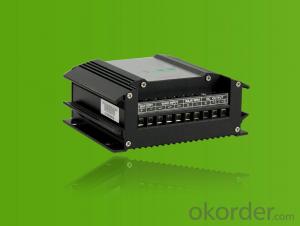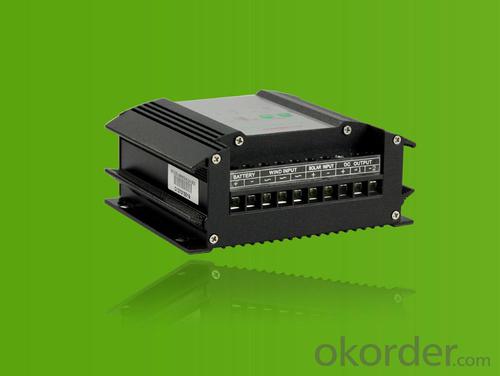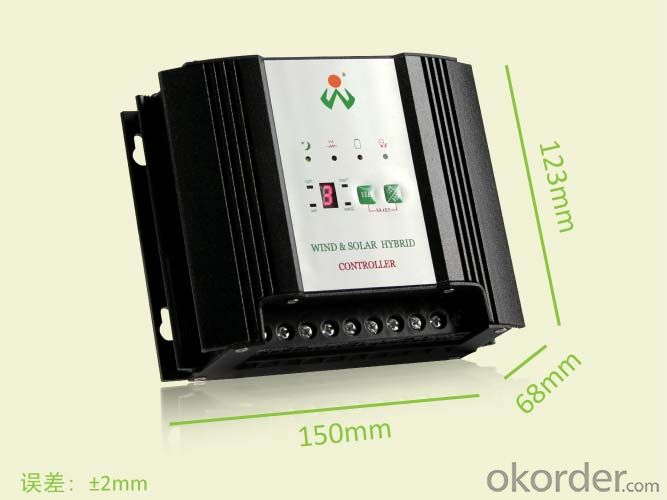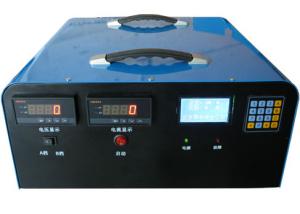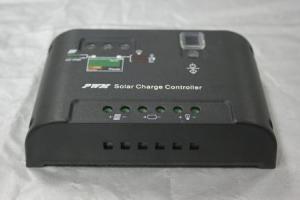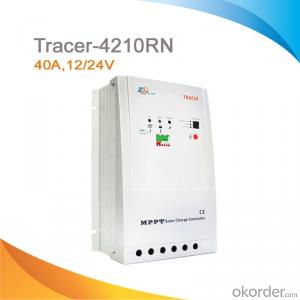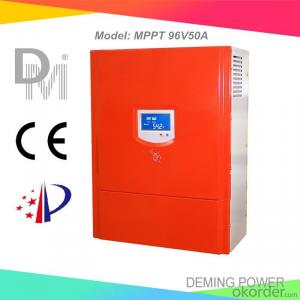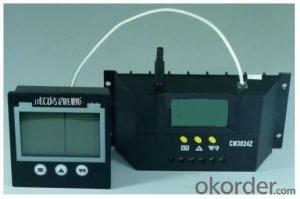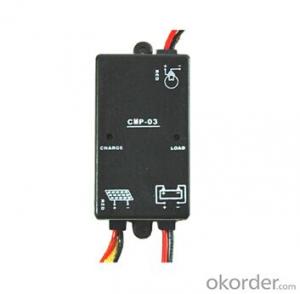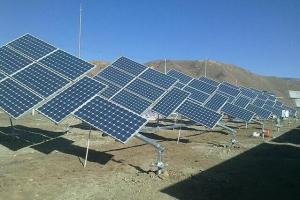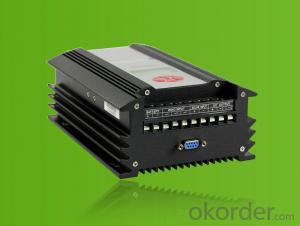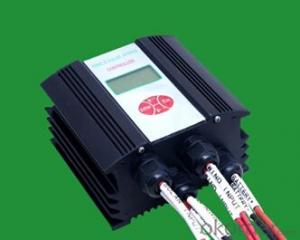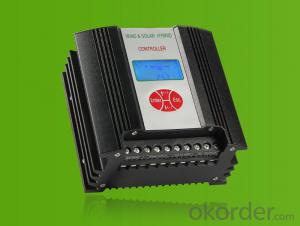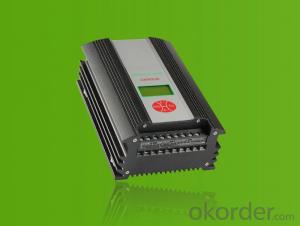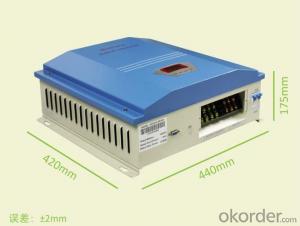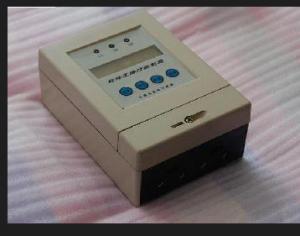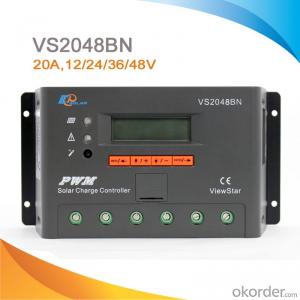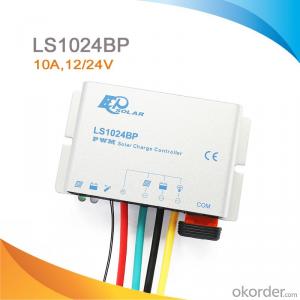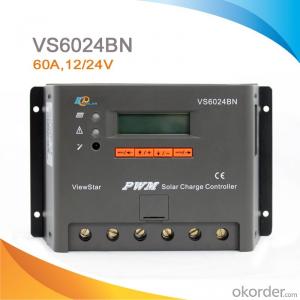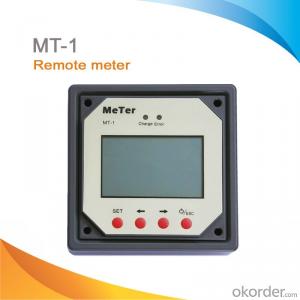Solar Controllers Buyers:Street Light Controller 24V Economical Wind Solar Hybrid
- Loading Port:
- Shanghai
- Payment Terms:
- TT or LC
- Min Order Qty:
- 1 unit
- Supply Capability:
- 10000 unit/month
OKorder Service Pledge
OKorder Financial Service
You Might Also Like
I. PRODUCT INTRODUCTION
The wind/solar hybrid street light controller is specially designed for high-end small-scale wind/solar hybrid system and especially suitable for wind/solar hybrid street light system and wind/solar hybrid monitoring system. It can simultaneously control wind turbine and solar panel and transform the wind and solar energy into electricity for the DC load use, with excess energy stored into batteries. Varieties of appearance and function design, which is flexible to meet the requirements of different customers.
II. PERFORMANCE FEATURES
Superior military-grade components to ensure the product stability.
Perfect protection function, thus the system has higher reliability.
LED、digits indicator for freely check and set various of status parameters.
Voltage limiting and current-limiting charge mode ensures battery in the best charging status.
Two DC Load output, light-control, time-control, constant output, and multiple output control mode selection
PWM stepless unload mode, which burn the excess power into Dump load, making the battery charging in best status.
High quality aluminum alloy appearance, with small size and good cooling effect.
III. APPLICATION AREAS
Stand alone wind/solar hybrid power station.
Stand alone domestic household wind/solar hybrid power system.
Mobile Communication base stations, expressway and other non-residential regions.
Coastal islands, remote mountainous, border posts for regions shortage of or without electricity.
Government demonstration projects, landscape lighting project, street light project etc.
IV. 24V TECHNICAL PARAMETERS
Product Model | WWS03-24-B00D | WWS04-24-B00D | WWS06-24-B00D |
Rated Battery Voltage | 24V | 24V | 24V |
Rated Wind Turbine Input Power | 300W | 400W | 600W |
Wind Turbine Maximum Input Power | 450W | 600W | 900W |
Wind Turbine Brake Current | 15A | 20A | 30A |
Rated solar input power | 200W | ||
Wind Turbine Charge Shutoff Voltage | 29V | ||
Wind Turbine Charge Recovery Voltage | 26.4V | ||
Battery Under Voltage Shutoff | 21.6V | ||
Battery Under Voltage Recovery | 24V | ||
Input over voltage shutoff | 32V | ||
PV Voltage Of Light-Control On | 2V | ||
PV Voltage Of Light-Control Off | 3.2V | ||
Load 1 and load 2 rated output current | 10A | ||
Load 1 output control mode | Light-Control On and Light-Control Off | ||
Load 2 output control mode | Light-Control On and Time-Control 5 hours | ||
Dumpload control mode | PWM | ||
Display mode | LED digits indicator | ||
Cooling | Aluminium alloy shell radiating | ||
Protection Level | IP53(Indoor) | ||
Quiescent current | ≤20 mA | ||
Display content | Over-voltage, Over-discharge, Overload, Short-circuit, Night etc. | ||
Protection function | Solar reverse charge protection , Solar reverse connection protection, Battery over charge protection, Battery over discharge protection, Battery reverse connection protection, Over Load protection, Short-circuit protection, Lightning protection, Wind turbine current limiting, Wind turbine automatic brake and manual brake. | ||
Ambient temperature | -20~+55℃ | ||
Ambient Humidity | 0~93%, without condensing | ||
Working aititude | ≤4000m | ||
Dimension | 125×152×62mm | ||
Net weight | 0.75kg | ||
In order to serve our customers better, our company can adjust parameters configuration according to customer’s requirement. | |||
- Q: Can a solar controller be used in a commercial solar system?
- Yes, a solar controller can be used in a commercial solar system. A solar controller helps regulate and optimize the charging and discharging of batteries in a solar system, ensuring efficient energy management and increasing the lifespan of the batteries. This is essential for both residential and commercial solar systems to maximize energy storage and utilization.
- Q: Can a solar controller be used with a solar-powered electric vehicle charging station network?
- Yes, a solar controller can be used with a solar-powered electric vehicle charging station network. A solar controller helps regulate the flow of electricity from the solar panels to the charging stations, ensuring that the energy generated by the solar panels is efficiently utilized for charging electric vehicles. It monitors and optimizes the charging process, protects the batteries from overcharging, and helps manage the overall performance of the charging station network.
- Q: How does a solar controller prevent thermal runaway in batteries?
- A solar controller prevents thermal runaway in batteries by monitoring and regulating the charging process. It ensures that the batteries are not overcharged, which can lead to excessive heat generation and potential thermal runaway. The controller adjusts the charging voltage and current to maintain a safe and optimal charging level, preventing any damage or overheating to the batteries.
- Q: How does a solar controller prevent undercharging of batteries?
- A solar controller prevents undercharging of batteries by monitoring the voltage and current from the solar panels and regulating the charging process. It ensures that the batteries receive the optimal amount of charge by adjusting the voltage and current to match the specific requirements of the battery. Additionally, it prevents over-discharging by disconnecting the battery from the solar panels when its voltage drops below a certain level, thus preserving the battery's lifespan.
- Q: What is the maximum current rating of a solar controller?
- The maximum current rating of a solar controller can vary depending on the specific model and type of controller. It typically ranges from 10 amps to 60 amps, but higher-rated controllers are also available for larger solar systems.
- Q: How long is the lifespan of a typical solar controller?
- The lifespan of a typical solar controller can vary depending on the quality of the controller and how well it is maintained. However, on average, a well-built and properly maintained solar controller can last between 10 to 15 years.
- Q: Are there any disadvantages of using a solar controller?
- Yes, there are a few potential disadvantages of using a solar controller. Firstly, solar controllers can add an extra cost to the overall solar power system setup. Additionally, some solar controllers may have limited compatibility with certain solar panel systems or may not be able to handle high voltage outputs. Another disadvantage is that solar controllers can introduce a small amount of energy loss, reducing the overall efficiency of the solar power system. Finally, certain types of solar controllers may require regular maintenance or replacement, adding to the overall maintenance cost of the system.
- Q: Can a solar controller be used with solar panel pole mounts?
- Yes, a solar controller can be used with solar panel pole mounts. The solar controller is responsible for regulating and monitoring the charging process of the solar panel system, and it can be connected to the solar panels regardless of their mounting method.
- Q: What is the maximum temperature range a solar controller can operate in?
- The maximum temperature range a solar controller can typically operate in is between -40 degrees Celsius to 85 degrees Celsius.
- Q: How do I integrate a solar controller with my existing solar system?
- To integrate a solar controller with your existing solar system, you will need to follow these steps: 1. Determine the compatibility: Check if the solar controller you have is compatible with your existing solar panels and inverter. Look for specifications such as voltage and current ratings to ensure a proper match. 2. Disconnect power: Before making any connections, make sure to disconnect the power supply to your solar system to avoid any accidents. 3. Locate the existing system components: Identify the location of your solar panels, inverter, battery bank (if applicable), and any existing charge controller. This will help you plan the integration process effectively. 4. Mount the solar controller: Choose an appropriate location to mount the solar controller near your existing system components. Ensure it is easily accessible and well-ventilated. 5. Connect the solar controller: Connect the solar panel wires to the solar controller's input terminals, following the manufacturer's instructions. Ensure proper polarity and tight connections. If you have multiple solar panels, they may need to be wired in series or parallel configurations, depending on the solar controller requirements. 6. Connect the output: Connect the solar controller's output terminals to the input terminals of your existing charge controller or inverter. Again, follow the manufacturer's guidelines for proper wiring and polarity. 7. Reconnect power: Once all connections are made, reconnect the power supply to your solar system. 8. Configure the solar controller: Depending on the model, you may need to configure the solar controller settings for optimal performance. Consult the user manual for specific instructions. 9. Monitor and test: Monitor your solar system's performance after integrating the solar controller. Ensure that the controller is functioning correctly and that your system is operating efficiently. If you are unsure about any step or lack experience with electrical installations, it is recommended to consult a professional electrician or solar installer for assistance to ensure a safe and successful integration process.
Send your message to us
Solar Controllers Buyers:Street Light Controller 24V Economical Wind Solar Hybrid
- Loading Port:
- Shanghai
- Payment Terms:
- TT or LC
- Min Order Qty:
- 1 unit
- Supply Capability:
- 10000 unit/month
OKorder Service Pledge
OKorder Financial Service
Similar products
Hot products
Hot Searches
Related keywords
